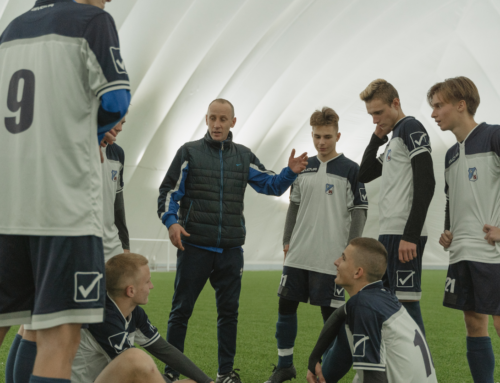Recruiting can be confusing and, with all the unknowns, even scary. So, to ease that confusion and help you start your recruiting on the right path, make sure you’re familiar with a few things every recruit should understand.
1. A Letter From A Coach Doesn’t Always Mean You’re Being Recruited
We get it. A letter from a coach – especially a handwritten note – can be pretty heady stuff for a high school recruit. But the reality is, most programs send out hundreds or even thousands of letters to recruits every year. In some cases, there is genuine interest from a school, but just as often those letters serve as marketing pieces to generate interest in those schools. The best comparison may be with the letters you began receiving (or will receive) after taking the SAT, ACT or even the PSAT. Like most recruiting correspondence from coaches, those cards and letters are little more than sales pitches in the form of a “personal letter.” Ultimately, it’s generally considered that active recruitment begins only when a coach invests the time to personally call you, invites you for a visit, or makes you a formal offer to join his or her team.
2. Social Media Chatter Also Doesn’t Mean You’re Being Recruited
If you’re a recruit trying to raise your recruiting profile, social media can be a great tool. For coaches, social media serves as a fast, easy platform to share the details, goals, wins, and mission of his or her program. But there’s also a lot of hype and misinformation that can also incorrectly convince a high school athlete that a given school is interested. Don’t listen to it or believe it. Just as with letters from coaches, regardless of what you might see from coaches or others, you’re not being actively recruited until a coach takes the time to personally give you a call, invites you for a visit, or makes you a formal offer to join his or her team.
3. It’s Up To You To Get On A Coach’s Recruiting Radar
According to one estimate, there are almost 8 million high school athletes in the United States. By comparison, there are only 1,349 schools in all divisions of the NCAA and the NAIA. Add it all up and it’s likely no coach can keep up with every recruit that is interested in his or her program. And that means it’s your job to get a coach interested in you and turn that interest into actual recruitment.
To do that, start by making a realistic list of schools where you might find the best fit. Then reach out to the coaches at those schools with a letter expressing why you’re interested in their school and their program and make sure it includes links to your online recruiting profile and your highlight reel. Be persistent and know that it may take more than one email or call for a coach to respond. Then, familiarize yourself with the recruitment rules and timelines for your sport and make sure you’re registered with the NCAA Eligibility Center to ensure you’re certified to play at the collegiate level.
4. Not Every Scholarship Is A Full Ride
While many recruits think ”athletic scholarship” equates to “full ride,” the fact of the matter is only Division I football and basketball offer full-ride scholarships for men, and basketball, tennis, gymnastics, and volleyball offer full scholarships for women. For just about any other sport in DI, DII, or the NAIA, a partial athletic scholarship is most often the norm. Further, while they do offer ample academic scholarships, remember that schools in NCAA Division III do not offer any form of an athletic scholarship. Long story short, understand that full-ride scholarships are actually somewhat rare and, if you land a partial scholarship instead, you or your family will be responsible for paying the education costs the scholarship doesn’t.
5. Grades Matter Most
All of the athletic talent, ability, and desire in the world mean nothing if you don’t qualify academically under the NCAA’s standards for minimum GPA, core class completion, and minimum entrance exam scores. Remember that those are academic minimums just for NCAA eligibility. But you’ll still also need to meet a given school’s admission requirements, which may be higher. In other words, no eligibility and no admission means no scholarship of any kind. So start early to ensure you get in all your core classes and put in the work to keep up your GPA and post solid scores on standardized entrance exams. Finally, remember that while everything you’ve read here has been oriented around being recruited for an athletic scholarship, the ultimate goal of that scholarship is to help pay for your college education and help you prepare for the rest of your life!
Did you enjoy the article ‘5 Recruiting Facts; What You Need To Know’? If so, check out more of our articles HERE.



